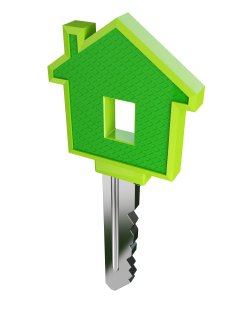Green Homes
Nanoose Bay, Parksville, Qualicum Beach & Area

Cash Back for Energy Efficiency Upgrades
Sun, Oct 19th, 2008 - Qualicum Beach, BC
Make energy efficient upgrades to your home which qualify you for provincial and federal incentives and PST exemptions. This $60-million program creates a single access point for provincial, utility and federal incentives by highlighting the best opportunities for energy savings and reducing greenhouse gas emissions. In all parts of B.C., homeowners are eligible for rebates and incentives for energy efficiency upgrades.
Five Ways to a Greener Home
May 05, 2007 | Vancouver, BC
According to Natural Resources Canada 17% of all energy used in Canada goes toward running our homes. Consequently, the potential for substantial energy savings is high, provided homeowners take the necessary steps. The benefits apply particularly to older homes; it is estimated that homes older than 25 years have the potential to save an average of 35% of there energy use. Here are five ways savings can be made.
1. Replace Incandescent Bulbs
Compact fluorescent light bulbs use one-quarter of the energy of standard incandescent bulbs, as a 15-watt CFDL produces the same amount of light as a 60-watt incandescent bulb. CFLs certified by Energy Star, an international marketing symbol to identify energy-saving home products, are more expensive than incandescent bulbs, but last longer. With an average 30 light fixtures in each of Canada's 12 million households, replacing a single 60-watt incandescent bulb with a 15-watt CFL in each one could save up to $73 million a year in energy costs.

2. Look for Energy Star
Energy Star appliances make a big difference to the efficiency of you home. Refrigerators certified under the program must be at least 15% more efficient than federal minimum energy-performance standards, which they typically achieve by using a more energy-efficient compressor and better insulation than conventional models. Energy Star standard-size freezers must exceed minimum energy performance standards by a least 10%, while compact models must beat them by at least 20%. Qualified dishwashers must outperform the standard by at least 25%. Many use "smart" sensors that adjust the wash cycle and amount of water to match the load, and may also have an internal heater.
3. Insulate Your Water Heater
About 15% of a typical house-hold energy bill goes to heating water. The water-heater is one of the biggest energy consumers in many Canadian homes, second only to the furnace. If you've got an older hot-water appliance, you can save by insulating the heater itself, the first three meters on cold-water pipes and the first two meters on hot water pipes. Also, many water-heater manufacturers set the temperature of the tank to 60 degrees C (140F), which you can reduce to as low as 55 degrees C (130F).
4. Reduce Your Water Consumption
Look for ways to reduce your water use; a low-flow shower head can cut your water use in the shower by over 30%, and installing tap aerators can give you the same pressure with less water flow. You can reduce the energy you use for a load of laundry by 93% by washing and rinsing your clothes in cold water. You can also reduce cold-water use by installing a low-flow toilet.
5. Retrofit Older Homes
Older houses can usually benefit from retrofitting to keep the heat in. Adding R-40 insulation, caulking, weather stripping, improving windows and doors can all save money and energy. Poorly insulated attics are a good candidate for improvement; if yours has less that 15 cm (6 inches) of insulation, it is worth putting more in. Insulating basements will also cut heat loss.



